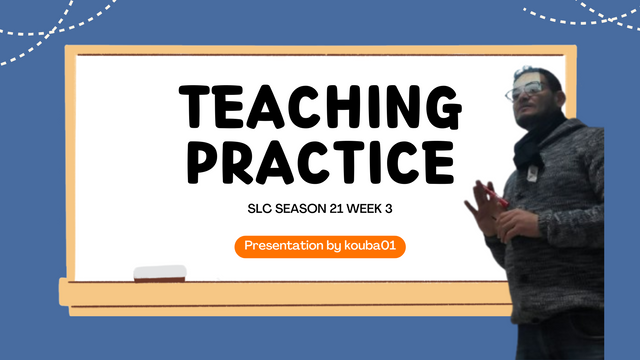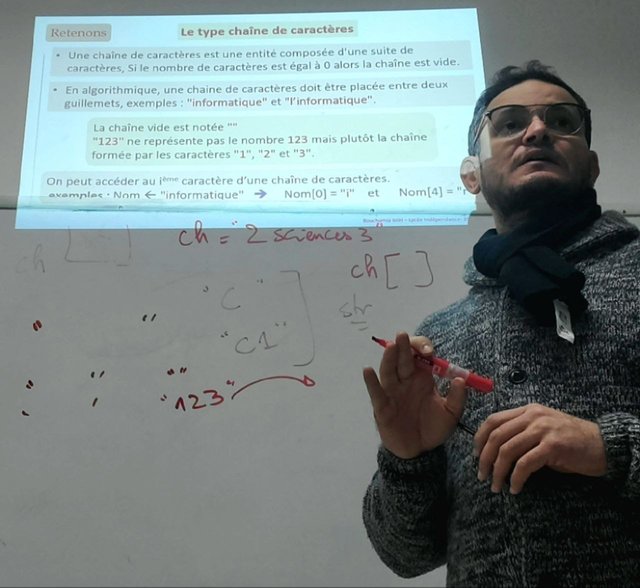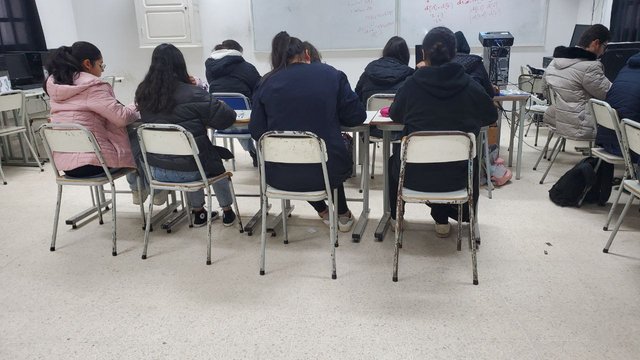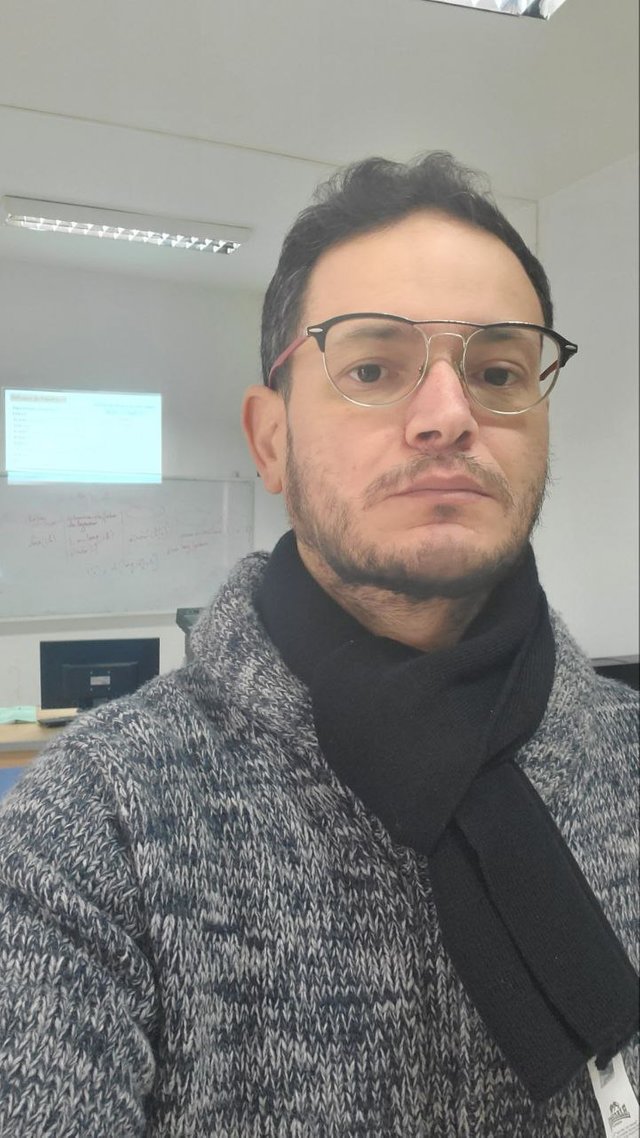
Hello steemians,
I’m excited to join this week’s challenge on teaching practice, a topic close to my heart as an educator. Teaching is not just about knowledge, it’s about effectively sharing it to inspire and engage students.
In my post, I’ll share my specialty, detail how I structure lessons with the input-process-output framework, and explain how I ensure cognitive, emotional, and practical growth in students. I’ll also showcase the strategies I use to adapt and improve my methods for future sessions. Join me as I document my teaching experience with insights and photos, reflecting on the joy and responsibility of being a teacher. Let’s learn and grow together through this challenge!
Tell us what your specialty is and what you would like to teach your students in the next hour-long meeting?
As a computer science teacher, I specialize in fundamental areas such as algorithms, relational databases, and programming languages like Python, and my mission is to convey this knowledge in a clear and structured way while engaging my students. students to deepen their theoretical understanding and apply them in practical contexts to demonstrate their real usefulness and relevance in concrete situations.
During my next session with my final year students, I will focus on Data Definition Language, commonly called DDL, which is an essential component of SQL allowing to structure and manage the architecture of relational databases, and To do this, I will start with a presentation of fundamental concepts such as the definition of tables, columns, data types as well as the relationships between the different entities of a database, before progressing towards the use of essential commands like CREATE TABLE, which allows you to create a table, ALTER TABLE, which is used to modify its structure, and DROP TABLE, used to delete it, illustrating each command with concrete examples and practical cases from real scenarios to help students to assimilate these notions while making them immediately usable in a simulated SQL environment.
At the same time, with my fifth-grade students, I plan to address an equally important topic, namely the for loop, which is a key structure in algorithms and Python programming, because it allows you to automate series of instructions while respecting well-defined conditions, and for this, I will start by explaining its general operation as well as its syntax, emphasizing essential elements such as the iteration variable and the range of values it goes through, before showing them simple and progressive examples to illustrate its application, such as displaying a sequence of numbers or repeating a particular task, then I will guide them towards more complex applications, such as calculating the sum of even numbers in a given range, creating patterns with characters or iterating over lists to perform conditional processing, and through practical exercises adapted to their level, I will seek to help them understand not only how to use this structure but also to see its usefulness in real contexts to solve problems efficiently and logically.
Tell us about how the learning takes place from the beginning to the end (input-process-output)?
Learning follows a clear, methodical structure that revolves around three fundamental stages, namely input, process and output, and I ensure that each stage is carefully tailored to the specific needs of students to maximize their commitment and understanding throughout the teaching activity.
The entry phase is the starting point where I begin by introducing preliminary concepts and essential prerequisites to the lesson ensuring that students have a solid foundation to approach the rest of the learning, for example, for baccalaureate students who are new to SQL commands, I make sure that they master the fundamental notions of a database, such as the structure of tables, relationships between data, columns and types while for my fifth secondary students, I check They understand the basics of programming, including the manipulation of variables and the sequential flow of instructions, to ensure they are ready to master new, more complex concepts.
Once this first step is well established, I begin the process phase which constitutes the heart of learning, and where I guide my students actively and progressively so that they can discover and assimilate new knowledge while putting it directly into practice thanks to concrete exercises and demonstrations. For my final year students who work on SQL, I start by presenting the syntax of each command, such as SELECT, INSERT or UPDATE, by illustrating their usefulness with examples from practical cases, before offering them suggestions. targeted exercises that allow them to write their own queries and see the results in a simulated environment, while for my fifth secondary students, I begin teaching the "for" loop by explaining how it works in a clear and detailed manner , in showing how it allows them to navigate a range of numbers with simple examples, before guiding them to more sophisticated applications, such as iterating over lists or creating patterns using characters, all accompanied by tips for avoid common mistakes and strengthen their autonomy.
The exit phase involves fully verifying the students’ understanding of their knowledge by engaging them in assessment exercises or interactive discussions that require them to actively apply the concepts and skills they have learned during the course. I devote this time not only to identifying and correcting the mistakes they have made but also to answering their questions in detail and ensuring that any remaining doubts are resolved while encouraging them to express their thoughts and reflections on the subject of study, which helps to improve their understanding and gradually build their confidence in their ability to solve problems. independently and will face similar challenges in the future.
How do you ensure that after the learning activity there are changes in the cognitive, affective and psychomotor aspects of students?
I ensure that there are significant changes in the cognitive, affective and psychomotor aspects of my students by designing the learning activity in such a way that it encompasses these three dimensions in a complementary and balanced way, ensuring that that each stage of education contributes to the development of their intellectual, emotional and practical skills. On a cognitive level, I make a point of checking that my students not only understand the concepts taught but that they are also able to apply them independently through practical exercises that encourage them to think and solve problems. concrete problems, such as writing an SQL query intended to extract specific data from a table or designing a Python algorithm using a for loop to calculate the sum of even numbers in a given interval, which pushes them to mobilize and deepen their knowledge.
On an emotional level, I strive to create a learning environment that is both positive and engaging by valuing the efforts made by my students, highlighting their successes, even modest ones, and encouraging them to take action. questions and express their ideas, while explicitly showing them how the skills they learn can be used in real-world contexts, for example by explaining to them that mastering SQL commands will allow them to work on database projects applicable in different professional fields or even that programming in Python offers them the possibility of automating repetitive tasks and gaining efficiency, which strengthens their motivation and their interest in the subject taught.
And on the psychomotor level, I ensure that my students develop essential technical skills by guiding them step by step in the use of the necessary tools and software, such as a database manager or an integrated development environment for Python, while allowing them to practice in a regular and progressive manner so that they acquire increasing ease in technical manipulations, whether it involves typing precise commands, correctly structuring code or navigating the functionalities of software, and this constant practice allows them not only to master technical actions but also to gain confidence in their ability to use these tools to solve real problems.
Whether the methods and strategies you use are appropriate, how do you develop methods and strategies in future learning meetings?
I develop my teaching methods and strategies by relying on a constant and in-depth analysis of students' needs as well as on the feedback that I collect after each session, because I consider that teaching is a constantly evolving process which requires continuous adjustments to respond to expectations and difficulties encountered by learners. After each meeting, I take the time to carefully review the elements that worked well, identifying the approaches that allowed students to progress effectively, but also the aspects that posed problems, whether related to the clarity of explanations, relevance of exercises or pace of learning, and I rely on these observations to adapt my teaching strategies. For example, if I notice that some students are having difficulty with abstract concepts like conditional logic in Python, I try to prepare more concrete, visual or interactive examples for the next session, in order to facilitate their understanding and make these notions more accessible.
I also remain attentive to new pedagogical approaches and technological innovations that can help improve learning, and I gradually integrate them into my courses according to their relevance and effectiveness, for example, I use interactive platforms to offer hands-on exercises that allow students to practice in real time and receive immediate feedback on their work, or visualization tools that make abstract concepts more tangible, such as the graphical representation of algorithms or data structures ....
Finally, I make sure to listen to students by regularly asking them for their opinion on the methods used, by inviting them to share their suggestions or ideas on subjects that interest them because this allows me to guide my upcoming sessions towards more relevant and engaging approaches, by taking their feedback into account and giving them the opportunity to actively contribute to the development of content, I create a participatory learning environment where students feel valued and involved, which further motivates them to engage in their own learning and to explore new intellectual horizons.
Thank you very much for reading, it's time to invite my friends @lil.albab, @stream4u, @pelon53 to participate in this contest.
Best Regards,
@kouba01




